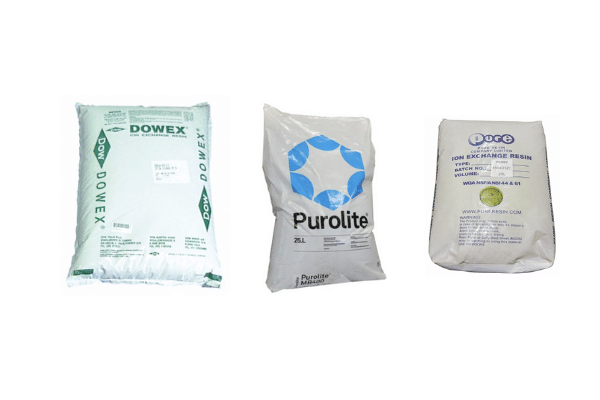Experts are well aware that water softeners are not always suitable for residential drinking water. The harder the water, the more sodium they release into the water. It is now widely known that this is unhealthy. Info about sodium contaminated water can be found very easily and these give important information about its risks to health. The process of such systems is usually concealed. They work as follows: the naturally dissolved calcium, which carries the flavor, is removed from the water. The missing calcium is now replaced by the sodium (Na) in the salt (NaCl) and the chloride (Cl) forms a compound with the extracted calcium, which is then flushed out and enters the environment or sewage treatment plants. The water is thus chemically altered, which may not only increase health risks, but also transform good tasting water into an unappetizing beverage. Additionally, it should not be forgotten that about 10% of drinking water is consumed for flushing these systems.
The softer the water, the more aggressive it becomes, leading to corrosion of parts that come into contact with the chemically altered water. This is also known to professionals and therefore should not be installed in buildings where galvanized iron pipes are present. Water can be aggressive for several reasons: the amount of chloride ions it contains, the degree of acidity (the lower the pH, the more aggressive it becomes), or the reduction of the calcium content, and other factors that also influence each other.
Increasingly, besides the health and corrosive aspects noted above, there’s a third consideration: in order to better secure the water supply, more and more communities are merging their water pipes. Even within municipalities, but especially in cities, drinking water is mixed from different reservoirs. This leads to the fact that the water hardness varies constantly. This, in addition to the above, leads to further problems when water softeners are used. As a rule, these are set to a specific water hardness. This means that the same amount of calcium is always removed from the water, even if the water hardness changes (usually due to seasonal changes). The softeners would have to be manually readjusted each time the water hardness changed. This would result in enormous additional effort and cost, which is why it is not done. This outdated technology can lead to the water becoming so soft that it becomes very aggressive and thus corrosive, or then, despite the softening system, leads to calcification.

Figure 1: Ion exchangers usually have a large space requirement and need more complex installations

Figure 2: Consumables that pollute water and the environment
Maintenance costs outweigh any price advantages
Therefore there’s the question: why do some experts still install such softeners in residential buildings, since they are well aware of the problems? An important point here is certainly that the installation of an ion exchanger is made palatable by the manufacturers with attractive financial conditions. However, the financial advantage for the installer is not necessarily only in the sale of such systems, but rather from the subsequent income that arises. Softening systems have become increasingly affordable in recent years, also as an argument for the owner of the property to obtain a favorable solution. The building owner only receives the bill, quite literally, in the following years. This consists of maintenance work, the cost of salts, higher electricity, water and wastewater consumption, and replacement of the granulate every 4 years, among other things. As a result, installers and suppliers benefit financially each year. This seems to be a not insignificant reason for the recommendation of ion exchangers.
The permanent dosing of sodium, the regular flushing of the system, the replacement of artificial resin, all this also leads to an increased impact on the environment and to increased water consumption. Longer the more property owners, whether small or large, are looking for sustainable solutions. Unfortunately, most of the time these are not directly related to the design of the installations. In addition, the decision to choose a chemical solution is also influenced by intensive and misleading advertising by manufacturers. In the end, the customer receives a system that is the opposite of what he actually wanted.
Such high-maintenance systems also require much more space than modern, sustainable technologies.
So are there any benefits to the owner?
If we now analyze the whole thing technically and financially, we come to the following conclusion: For the owners, but also for the tenants, softening systems bring no or only minor advantages. If all parameters are compared exactly, one inevitably comes to this result. It is true that sodium stains on dark surfaces, on shower partitions or in pans are somewhat easier to remove than lime stains. Nevertheless, the disadvantages clearly outweigh the disadvantages.
Among other things, it should be noted that water softeners cannot break down existing limescale layers in pipes and/or boilers. Therefore, they are completely unsuitable for older buildings or even for newer residential buildings that already have calcified pipes.
Finally, the question remains, how do I even get the information of the alternative technologies mentioned above? Most of them, by the way, ideally do not change the water quality, chemical composition and pH, while being contemporary, sustainable and ecological.
AQUA4D® offers such an alternative – a water treatment system which is incredibly effective while not changing water chemistry, maintaining taste, and requiring very little maintenance. Find out more below.
Switzerland
Sustainable Buildings
AQUA4D Webinar highlights: preventing limescale, corrosion and bacteria


